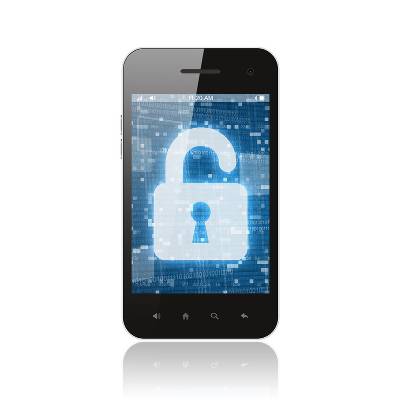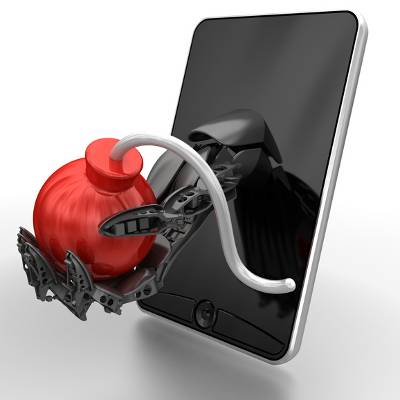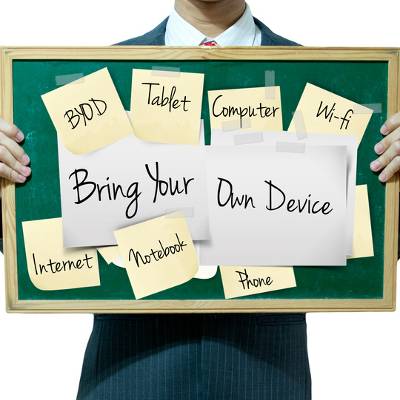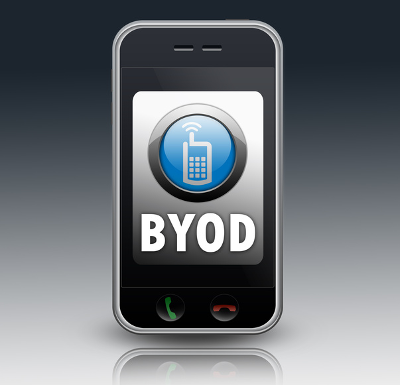Have any question?
Call (409) 861-4450
Call (409) 861-4450
Business is more mobile now than it has ever been. For the most part, this uptick in mobility has helped sustain some business at a time when many would be expected to fail, but mobility isn’t all good. This month we thought we would take a long look at mobility and how it can be a problem for modern businesses.
While smartphones and tablets can help businesses quite a bit, they can also be quite detrimental to their success. If you can get past the issues related to employees bringing their own devices to the workplace, then you’ll be able to save a considerable amount of time and resources on device procurement, but you certainly want to make sure you have a mobile device management policy put in place first.
 If you've ever had your smartphone stolen, you can attest to the frustration and potential risk that it brings. Many organizations and legislators are working to muzzle the issue, and there are steps that you can personally take to help prevent your device from being stolen. Let's take a look at how to prevent smartphone theft, and how to respond if your gadget is stolen.
If you've ever had your smartphone stolen, you can attest to the frustration and potential risk that it brings. Many organizations and legislators are working to muzzle the issue, and there are steps that you can personally take to help prevent your device from being stolen. Let's take a look at how to prevent smartphone theft, and how to respond if your gadget is stolen.
Bring Your Own Device, or BYOD, has become an accepted practice in the workplace, but only when it’s implemented properly. The fact remains that allowing workers to use their personal devices for work purposes has its benefits and disadvantages, and that you should only allow them to do so after they adhere to your company’s BYOD policy. Of course, this assumes that you actually have a policy, so let’s talk about how to set up a quality BYOD policy.
 For small and medium-sized businesses, technology management can be a tricky situation. You want to ensure that your IT doesn't break your budget, but you also want to make using your technology as easy as possible for your end users. Unfortunately, for many employees, your business’s technology conduct and practices could be driving them insane.
For small and medium-sized businesses, technology management can be a tricky situation. You want to ensure that your IT doesn't break your budget, but you also want to make using your technology as easy as possible for your end users. Unfortunately, for many employees, your business’s technology conduct and practices could be driving them insane.
 Mobile devices have taken the workplace environment by storm, and you’d be hard-pressed to find anyone who doesn’t use their smartphone, laptop, or other device for work purposes. This trend, called Bring Your Own Device (BYOD), helps employers spend less on new solutions, but it also presents a risk that needs to be managed: the Internet of Things (IoT).
Mobile devices have taken the workplace environment by storm, and you’d be hard-pressed to find anyone who doesn’t use their smartphone, laptop, or other device for work purposes. This trend, called Bring Your Own Device (BYOD), helps employers spend less on new solutions, but it also presents a risk that needs to be managed: the Internet of Things (IoT).
 Mobile devices are challenging the traditional perception of the office environment. When employees bring their own devices to work, this is called Bring Your Own Device (BYOD), and it’s an increasingly popular trend. Initially thought of as a threat, BYOD is proving to be a valuable option for businesses wanting to increase productivity, so long as it’s regulated properly.
Mobile devices are challenging the traditional perception of the office environment. When employees bring their own devices to work, this is called Bring Your Own Device (BYOD), and it’s an increasingly popular trend. Initially thought of as a threat, BYOD is proving to be a valuable option for businesses wanting to increase productivity, so long as it’s regulated properly.
 As expected, mobile technology is a consistent part of daily business operations for many companies around the world. Employees love taking advantage of the mobility these devices offer, making their home office just as useful as their in-house workstation. However, a mobile device management solution needs to be strictly adhered to in order to optimize security and guarantee that a stray smartphone doesn’t expose your data to unexpected eyes.
As expected, mobile technology is a consistent part of daily business operations for many companies around the world. Employees love taking advantage of the mobility these devices offer, making their home office just as useful as their in-house workstation. However, a mobile device management solution needs to be strictly adhered to in order to optimize security and guarantee that a stray smartphone doesn’t expose your data to unexpected eyes.
 Mobile devices are changing the way that businesses look at the workforce, but one of the main draws (and possibly detriments) is how the industry continues to change rapidly as new solutions are made available. In order to maximize your business’s efficiency with mobile devices, it’s important to consider these three trends shaping the way that organizations handle modern mobile device management.
Mobile devices are changing the way that businesses look at the workforce, but one of the main draws (and possibly detriments) is how the industry continues to change rapidly as new solutions are made available. In order to maximize your business’s efficiency with mobile devices, it’s important to consider these three trends shaping the way that organizations handle modern mobile device management.
 A trend that’s taking the office by storm is BYOD, or Bring Your Own Device. These policies entail workers bringing their own devices to the office and using them for work-related purposes. While this opens up many avenues for enhanced productivity and efficiency, being too laissez faire with your BYOD policy could instigate some problems later on, primarily in the security field.
A trend that’s taking the office by storm is BYOD, or Bring Your Own Device. These policies entail workers bringing their own devices to the office and using them for work-related purposes. While this opens up many avenues for enhanced productivity and efficiency, being too laissez faire with your BYOD policy could instigate some problems later on, primarily in the security field.
 As a technology consumer, you might realize that your mobile device’s hard drive storage space is somewhat lackluster compared to your needs. Countless photos, applications, and videos take up a ton of space, and if something were to cause the device to fill up suddenly, you’d be out of luck. How can you prevent this? You can start by using these four tips to get around your device’s lack of storage.
As a technology consumer, you might realize that your mobile device’s hard drive storage space is somewhat lackluster compared to your needs. Countless photos, applications, and videos take up a ton of space, and if something were to cause the device to fill up suddenly, you’d be out of luck. How can you prevent this? You can start by using these four tips to get around your device’s lack of storage.
 Employees bringing their own mobile devices into the workplace (BYOD) is one of the hottest business technology trends. BYOD has been shown to increase productivity, but when it’s implemented improperly, it can leave your business vulnerable to security threats. How do you motivate employees to stick to your BYOD policy in order to ensure the safety of your company’s data?
Employees bringing their own mobile devices into the workplace (BYOD) is one of the hottest business technology trends. BYOD has been shown to increase productivity, but when it’s implemented improperly, it can leave your business vulnerable to security threats. How do you motivate employees to stick to your BYOD policy in order to ensure the safety of your company’s data?
 As mobile technology booms, employers and employees are learning how to best take advantage of using new mobile technology in the workplace (a trend known as BYOD). To be sure, there are several advantages that come with BYOD, but there’s still hesitancy for many businesses to fully adopt mobile technology due to a lack of trust.
As mobile technology booms, employers and employees are learning how to best take advantage of using new mobile technology in the workplace (a trend known as BYOD). To be sure, there are several advantages that come with BYOD, but there’s still hesitancy for many businesses to fully adopt mobile technology due to a lack of trust.
 Mobile technology has invaded our very way of life. We don’t leave the house without our mobile phones, and many business owners have their phones integrated to connect with their company’s network. The average user has many different social media applications and others that utilize personal information. What would happen if you lost it?
Mobile technology has invaded our very way of life. We don’t leave the house without our mobile phones, and many business owners have their phones integrated to connect with their company’s network. The average user has many different social media applications and others that utilize personal information. What would happen if you lost it?
 The concept behind BYOD seems really good--employees bring their personal devices to work and use them to accomplish company projects. Initially, BYOD was well received, but after reviewing the security risks, more companies are opting out of it. Is there another way to use mobile devices at work without all the hassle and risks of BYOD?
The concept behind BYOD seems really good--employees bring their personal devices to work and use them to accomplish company projects. Initially, BYOD was well received, but after reviewing the security risks, more companies are opting out of it. Is there another way to use mobile devices at work without all the hassle and risks of BYOD?
 The trend of employees bringing in their own mobile devices to the office and using them for work purposes (BYOD) is growing rapidly. In fact, a new report from Juniper Research forecasts that by 2018, more than one billion employee-owned devices will be used in enterprises. A trend this big means that organizations have to take BYOD seriously.
The trend of employees bringing in their own mobile devices to the office and using them for work purposes (BYOD) is growing rapidly. In fact, a new report from Juniper Research forecasts that by 2018, more than one billion employee-owned devices will be used in enterprises. A trend this big means that organizations have to take BYOD seriously.
 Two of the latest trends in business culture are environmentally friendly green campaigns and Bring Your Own Device (BYOD) work environments. There are a few ways that a BYOD system can contribute to the success of your company's green campaign, as they both seek to use technology to increase everyday efficiency at the office.
Two of the latest trends in business culture are environmentally friendly green campaigns and Bring Your Own Device (BYOD) work environments. There are a few ways that a BYOD system can contribute to the success of your company's green campaign, as they both seek to use technology to increase everyday efficiency at the office.
 The latest news in office technology movements is the shift toward BYOD (Bring Your Own Device) environments; in which employees are bringing their own mobile devices to work. All the cool kids are doing it, but should you? Before you follow the trend and allow your employees to bring their devices to work, you should consider these risks.
The latest news in office technology movements is the shift toward BYOD (Bring Your Own Device) environments; in which employees are bringing their own mobile devices to work. All the cool kids are doing it, but should you? Before you follow the trend and allow your employees to bring their devices to work, you should consider these risks.
 There's a tidal wave of different consumer devices available on the market; smartphones, tablets, laptops, netbooks, and much more. Employees love their devices and love bringing them to work. If your company is allowing for Bring Your Own Device (BYOD), then you will want professional support to get the most out of it.
There's a tidal wave of different consumer devices available on the market; smartphones, tablets, laptops, netbooks, and much more. Employees love their devices and love bringing them to work. If your company is allowing for Bring Your Own Device (BYOD), then you will want professional support to get the most out of it.
Get the Knowledge You Need to Make IT Decisions
Technology is constantly evolving, and keeping up can feel overwhelming. Whether you want to understand cybersecurity threats, explore automation, or learn how regulations like PCI DSS impact your business, we’ve made it easy to access clear, straightforward insights on key IT topics.
Learn more about what NetWorthy Systems can do for your business.
NetWorthy Systems
701 W. Division Ave Suite 100
Orange, Texas 77630